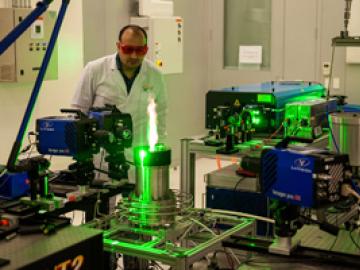
Updated software improves slicing for large-format 3D printing


With a 3-D printed twist on an automotive icon, the Department of Energy’s Oak Ridge National Laboratory is showcasing additive manufacturing research at the 2015 North American International Auto Show in Detroit.






Researchers at the Department of Energy’s Oak Ridge National Laboratory have demonstrated an additive manufacturing method to control the structure and properties of metal components with precision unmatched by conventional manufacturing processes. Ryan D...



